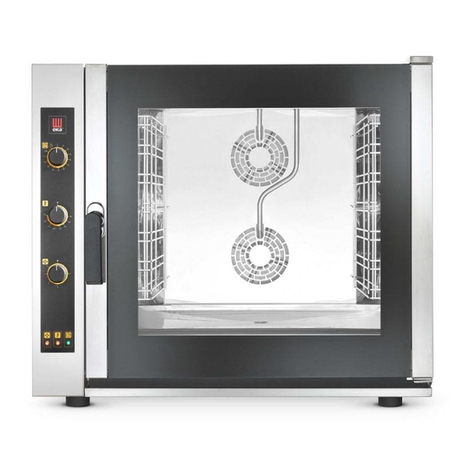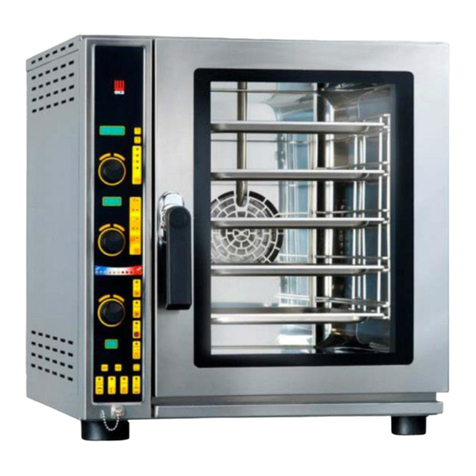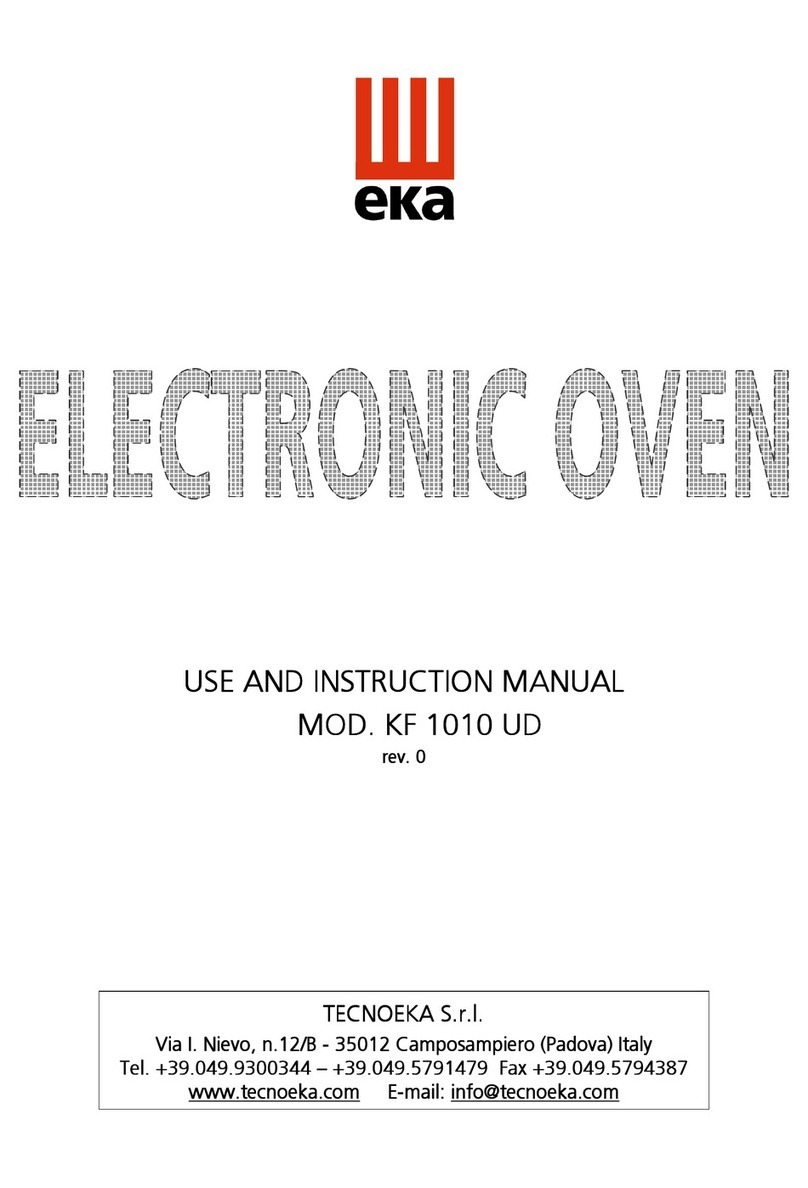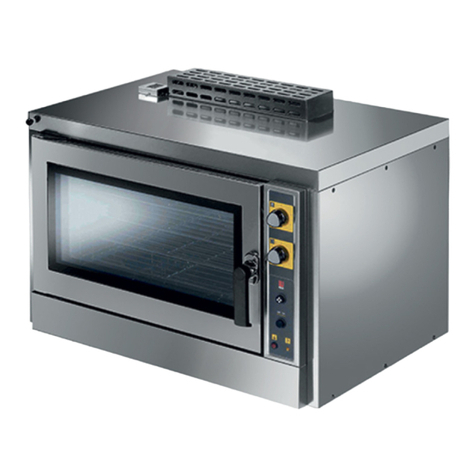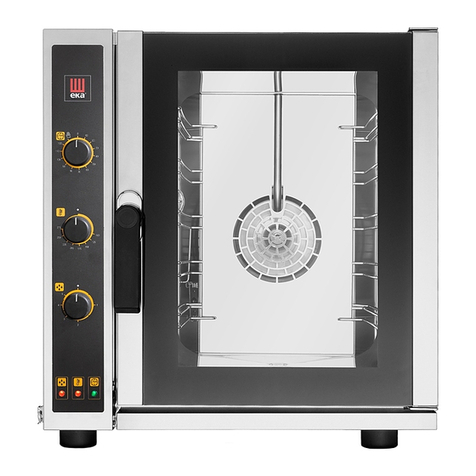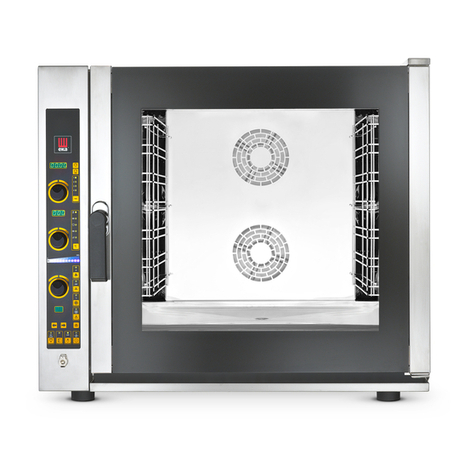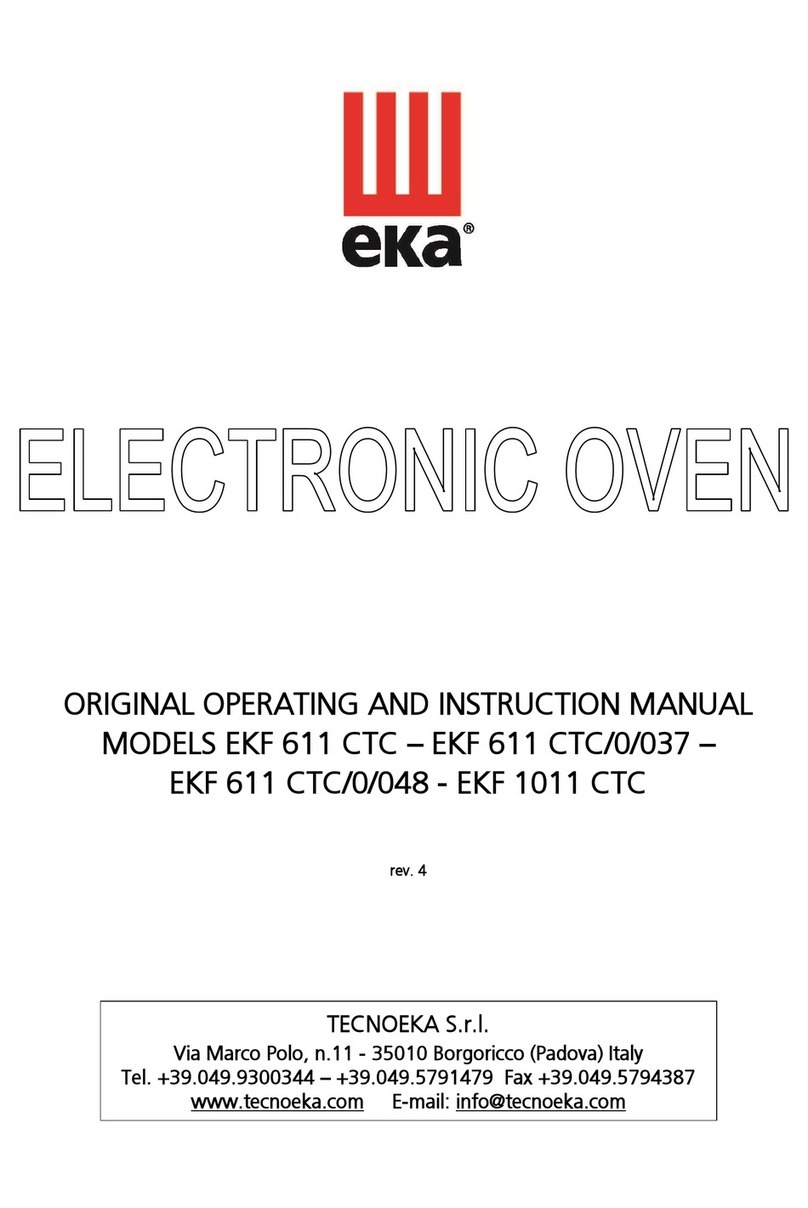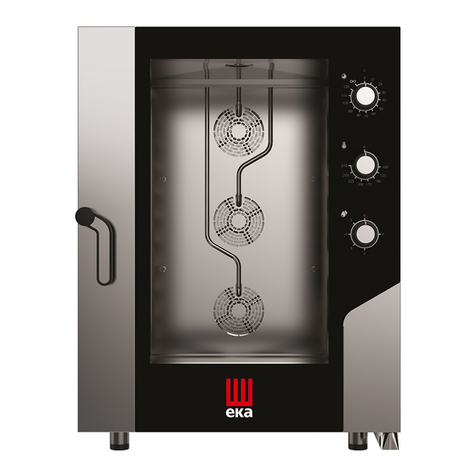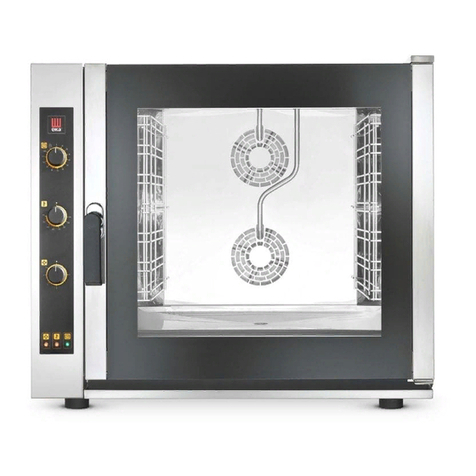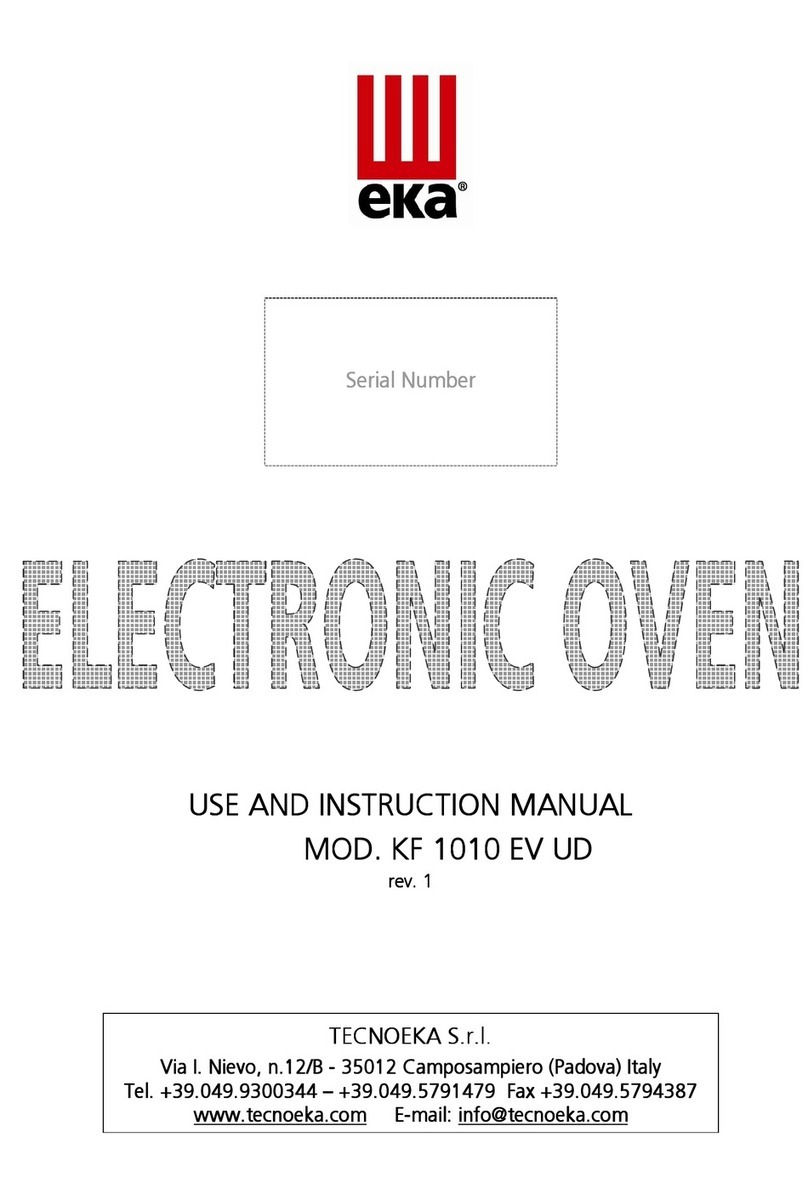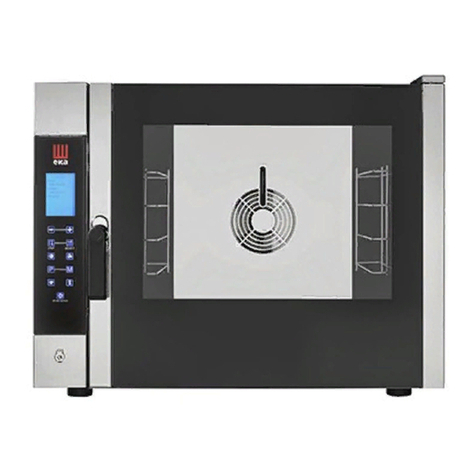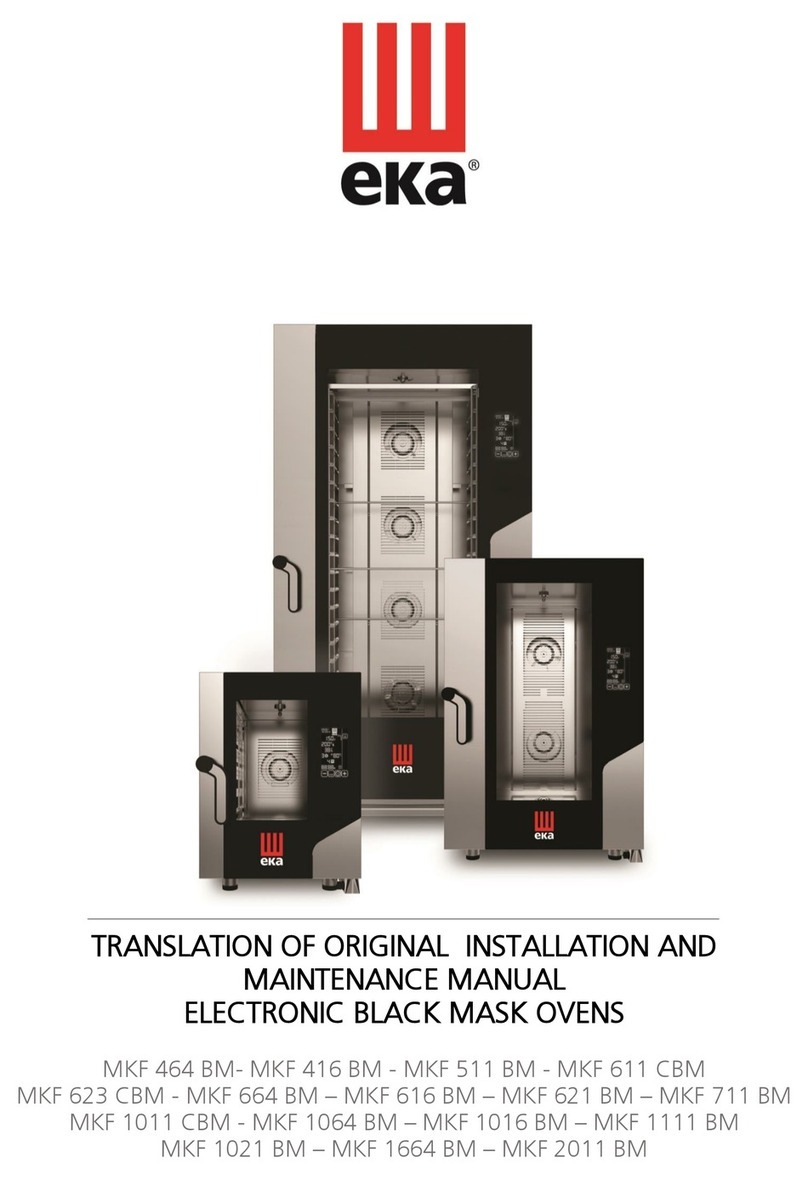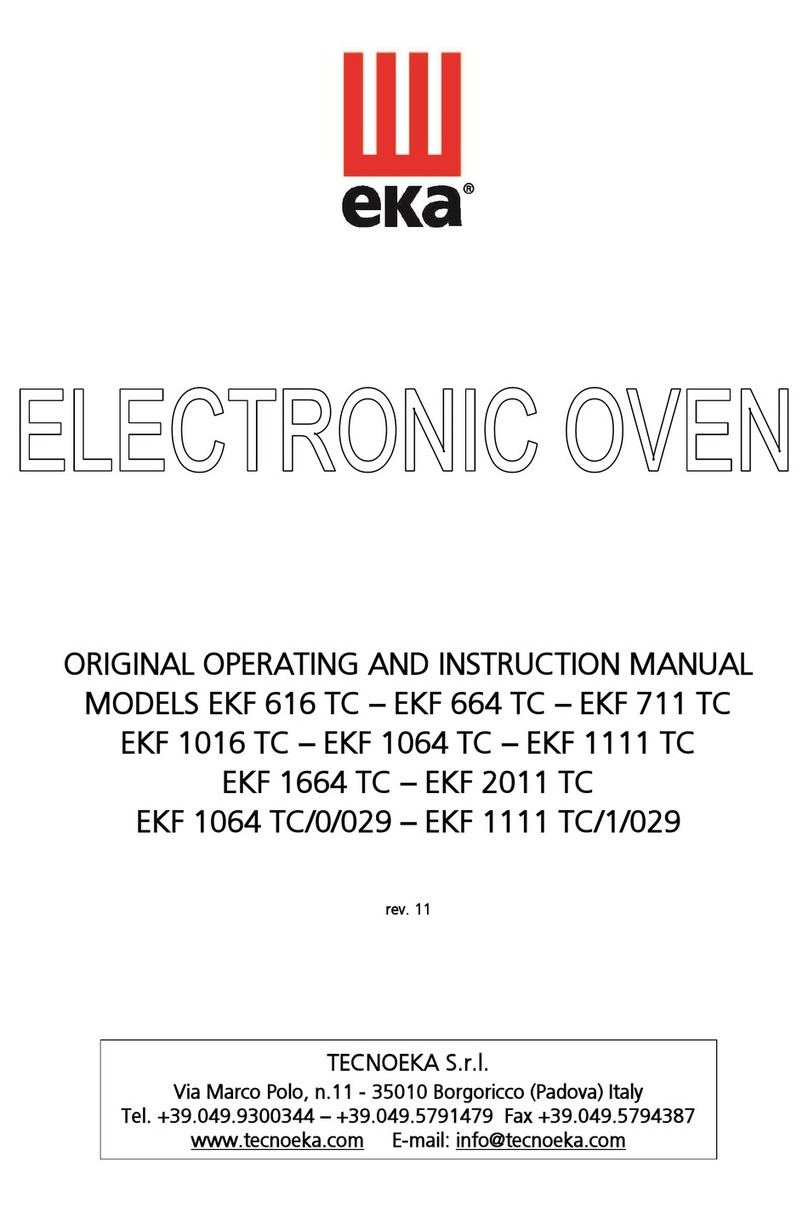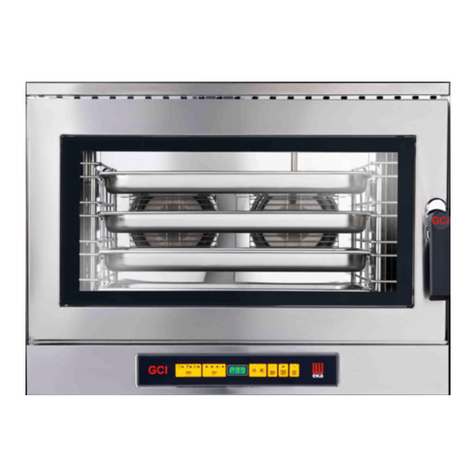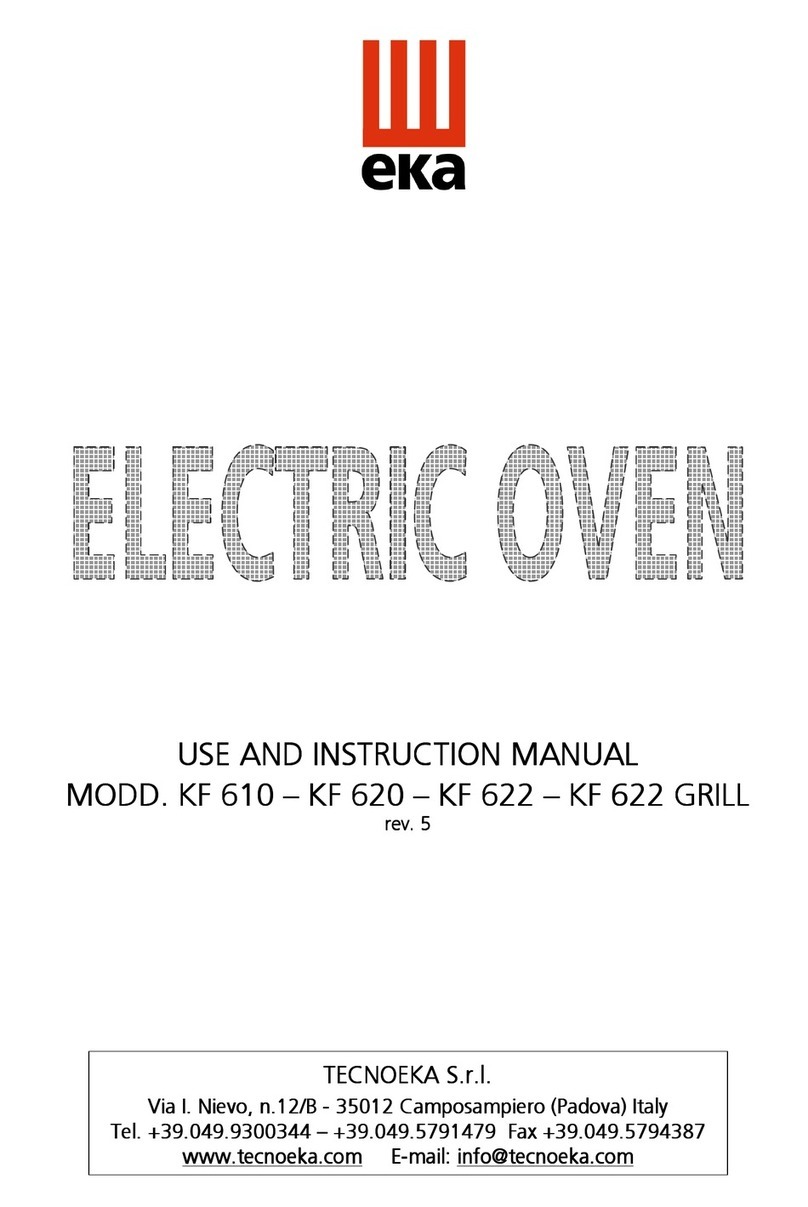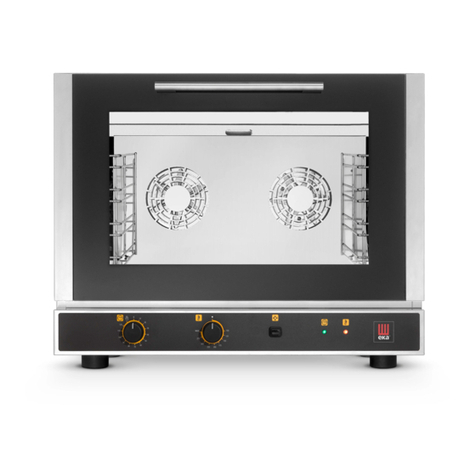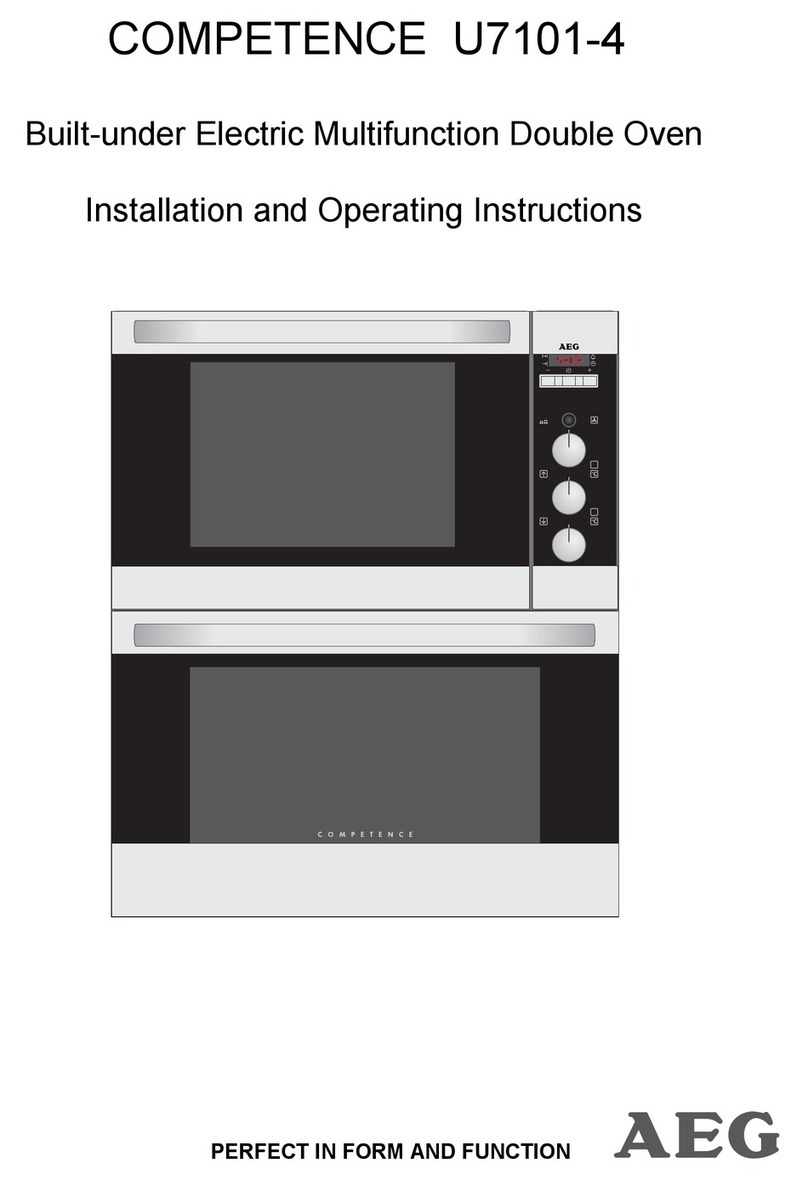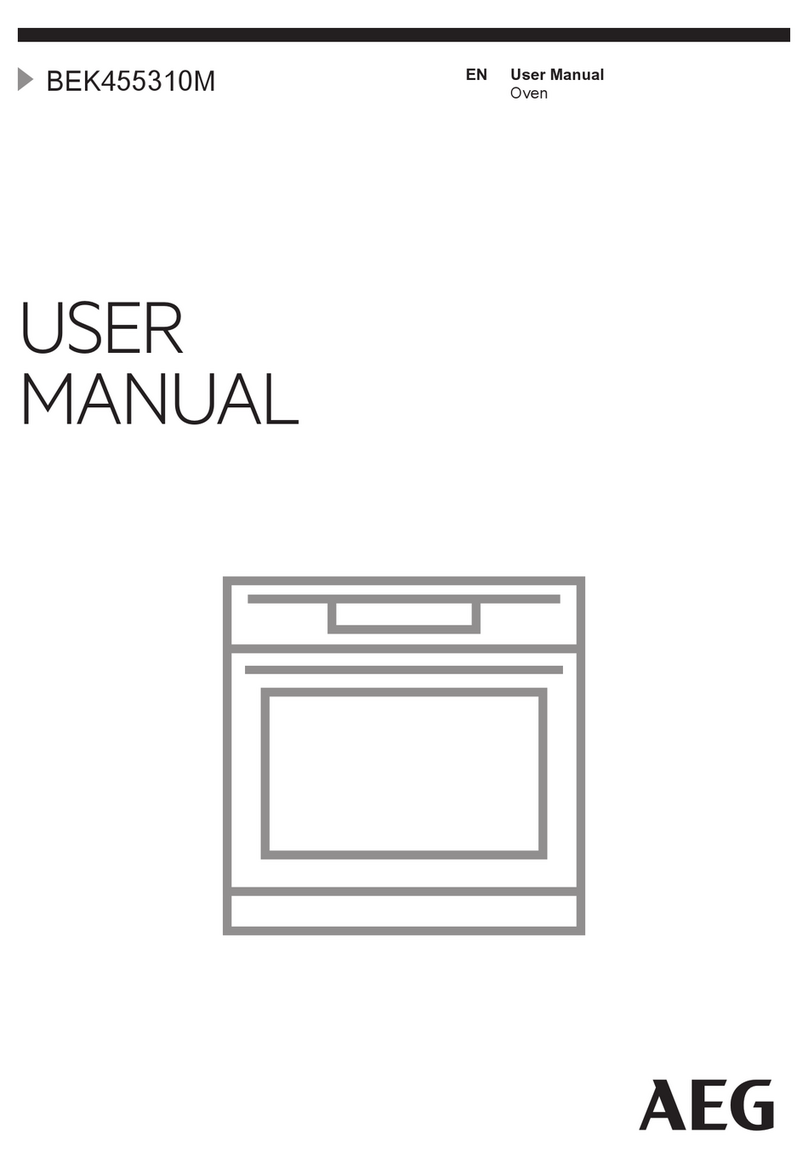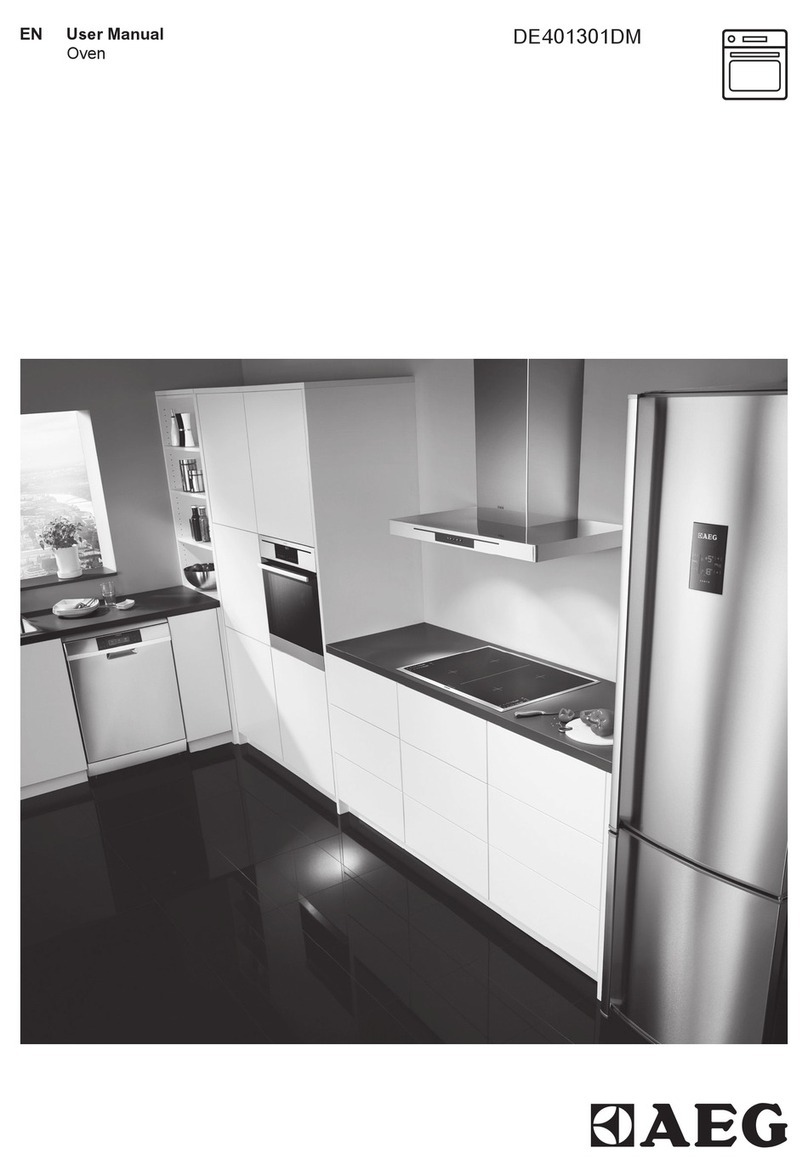Electronic Ovens rev. 0 __________________________________ EKF 1111 E UD – EKF 1064 E UD – EKF 1016 E UD
_________________________________________________________________________________________ page 7
2.6 osi
2.6 osi2.6 osi
2.6 ositioning
tioningtioning
tioning
Check the place where the appliance will be installed to ensure that the passages (doors and
corridors) are wide enough (the appliance measurements are given in Fig. 1). The appliance
must be positioned in a perfectly horizontal manner on a table (preferably under a suction
hood) or other similar surface, never on the floor
never on the floor never on the floor
never on the floor (The height of the table/support must minim.
85cm from the
floor). If the oven is positioned by hand, as it weighs 155kg, it must be lifted by
at least four people. The appliance must be held on both sides at the bottom, (the points where
it can be held are clearly marked) near to the 4 feet (it is easier to lift if all 4 people synchronise
their movements).
For easier access and to allow the air to circulate freely around the appliance, leave at least 50
cm between the left side and the wall (or other appliances), and at least 10 cm between the
back and the wall and the right side and the wall (see Fig. 1). The natural ventilation that is
needed to ensure efficient working for the oven is through the openings on the walls of the
outer covering (left side and back). Consequently, it is strictly forbidden to obstruct these
aeration openings, even partially and even for short periods. Failure to observe this specific
Failure to observe this specific Failure to observe this specific
Failure to observe this specific
prohibition, shall release the manufacturer from all liability for the appliance and shall
prohibition, shall release the manufacturer from all liability for the appliance and shall prohibition, shall release the manufacturer from all liability for the appliance and shall
prohibition, shall release the manufacturer from all liability for the appliance and shall
immediately cancel any guarantee rights for the said appliance,
immediately cancel any guarantee rights for the said appliance,immediately cancel any guarantee rights for the said appliance,
immediately cancel any guarantee rights for the said appliance,
because its constructive
conformity has been voluntarily compromised.
If the appliance is installed near walls, tops, shelves or other similar items, they must not be
inflammable or sensitive to heat, otherwise they must be protected by a suitable fireproof
covering.
In all cases, all fire prevention standards must be strictly adhered to.
This appliance cannot be built in nor positioned in series with others.
2.7
2.7 2.7
2.7 Electric connection
Electric connectionElectric connection
Electric connection
The connection to the main supply must be in conformity with current legislation in force.
Before making the electrical connections, make sure that:
-the voltage and frequency values of the power supply system match the values on the
"technical data" plate affixed on the rear of appliance;
-the pressure relief valve and the system must be able to support the appliance load (see
the data on the technical rating plate;
-the power supply system must be equipped with an efficient earth connection according
the power supply system must be equipped with an efficient earth connection according the power supply system must be equipped with an efficient earth connection according
the power supply system must be equipped with an efficient earth connection according
to current regulations;
to current regulations;to current regulations;
to current regulations;
-with direct-to-mains connection, a multi-pole switch must be installed between the
appliance and the mains with a minimum opening of the overvoltage category III (4000
V) between the contacts, of a sufficient size for the load and conforming to current
regulations (e.g. an automatic magnetothermal switch);
-the multi-pole switch that is used for the connection must be easily accessible once the
appliance is installed;
-the yellow/green earth wire must not be disconnected by the switch;
the yellow/green earth wire must not be disconnected by the switch;the yellow/green earth wire must not be disconnected by the switch;
the yellow/green earth wire must not be disconnected by the switch;
-the supply voltage must not differ from the rated voltage level by ±10% when the
appliance is operating;
-make sure that after inserting the power supply cord into the terminal block it does not
come into contact with any of the cooking range's hot parts.
-if the supply cable is damaged then it must be replaced by the manufacturer or b
if the supply cable is damaged then it must be replaced by the manufacturer or bif the supply cable is damaged then it must be replaced by the manufacturer or b
if the supply cable is damaged then it must be replaced by the manufacturer or by your
y your y your
y your
technical support or by a qualified person to avoid any risk.
technical support or by a qualified person to avoid any risk.technical support or by a qualified person to avoid any risk.
technical support or by a qualified person to avoid any risk.
